IMPLANTOLOGY
Implants - Best solution for lost teeth to restore your confidence.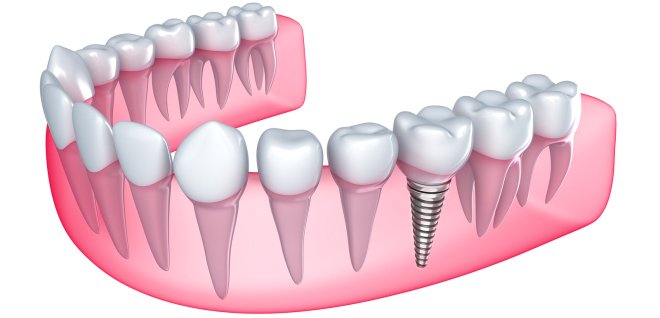 A dental implant is a titanic rod that is surgically inserted into the jaw bone. The treatment is performed under a local anaesthetic, is rather painless and takes a short time. The inserted implant acts as a tooth root that makes the base for later prosthetic restoration. After the implantation, a certain period of time is required for the osseointegration to take place, app. 2 months and more depending on the implant type and condition of the bone. After implementation has been successfully done a prosthetic replacement is made. Into the implant first a supra-structure is fitted on which later on teeth are placed. Every prosthetic work consists of implants, supra-structure and prosthetic tooth replacement (final teeth).
A dental implant is a titanic rod that is surgically inserted into the jaw bone. The treatment is performed under a local anaesthetic, is rather painless and takes a short time. The inserted implant acts as a tooth root that makes the base for later prosthetic restoration. After the implantation, a certain period of time is required for the osseointegration to take place, app. 2 months and more depending on the implant type and condition of the bone. After implementation has been successfully done a prosthetic replacement is made. Into the implant first a supra-structure is fitted on which later on teeth are placed. Every prosthetic work consists of implants, supra-structure and prosthetic tooth replacement (final teeth).
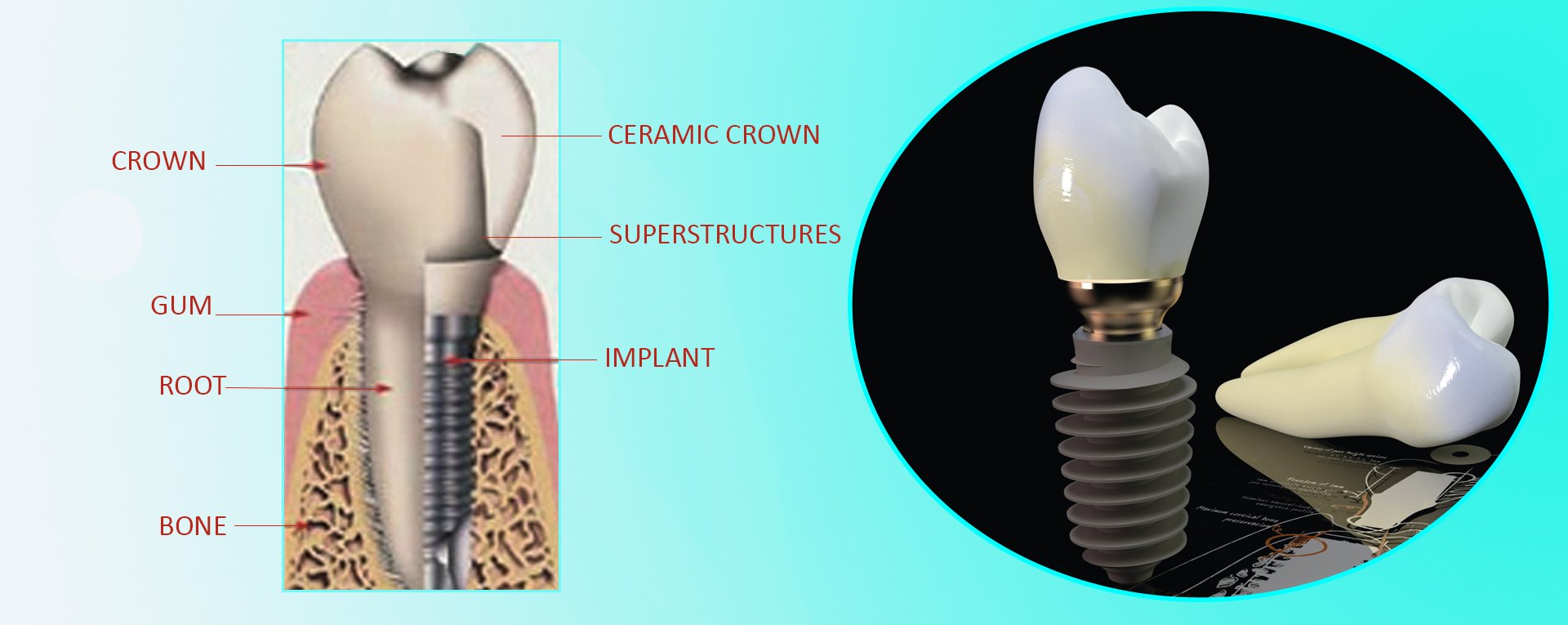
1. Anamnesis, diagnosis, therapy plan
Before implants are made all patients undergo a procedure consisting of in-depth informing on patient’s health condition, habits, scan analysis (RVG, DIGITAL ORTHOPAN , CBCT JAW SCAN) and making of working models.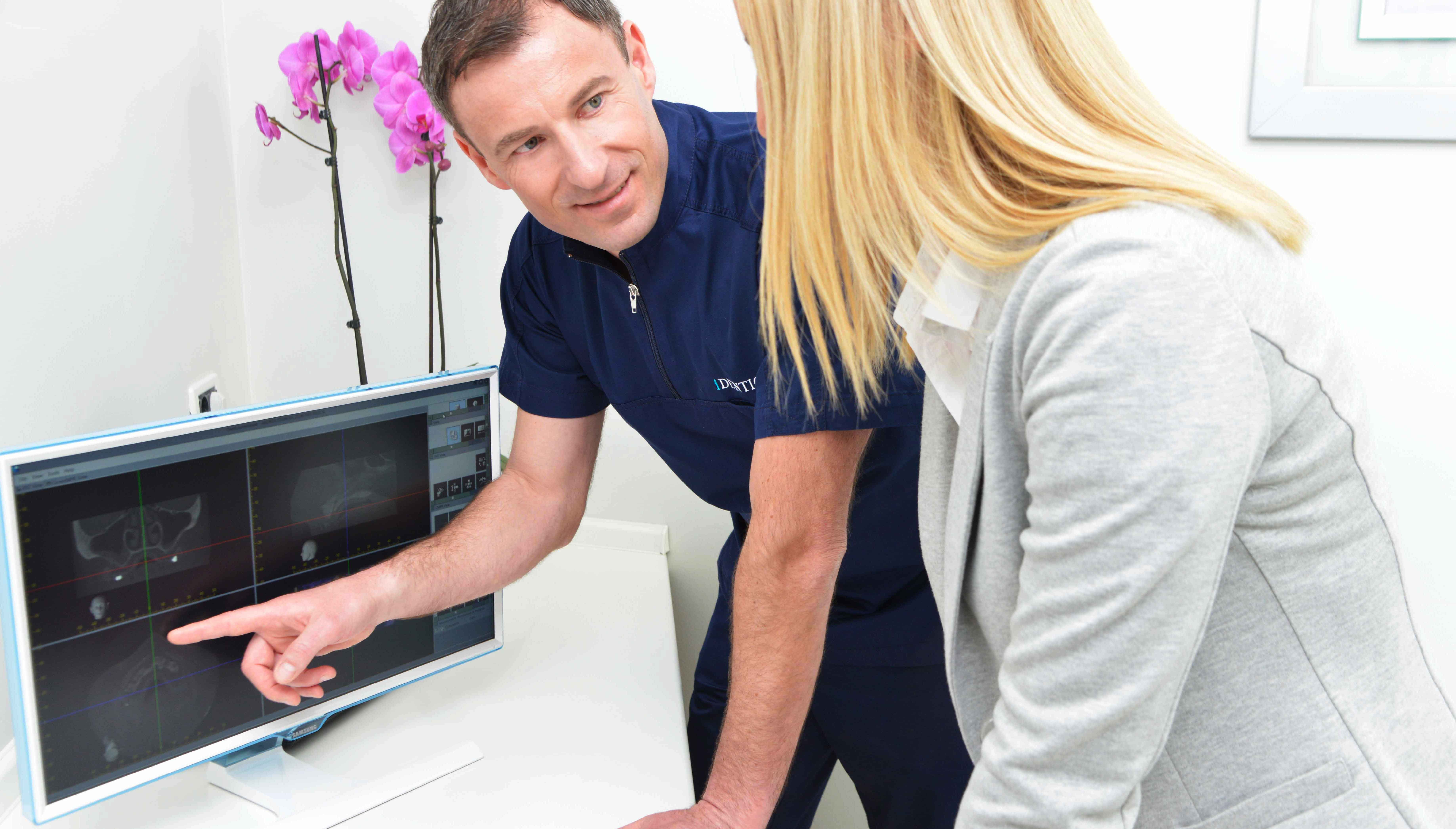 Based on gathered information and taking into account the function and aesthetics of implant works as well as the possibility of maintaining oral hygiene, we suggest a patient the implant treatment plan with time and financial schedule.
Based on gathered information and taking into account the function and aesthetics of implant works as well as the possibility of maintaining oral hygiene, we suggest a patient the implant treatment plan with time and financial schedule.
2. Surgical treatment for inserting implants
The treatment is performed under a local anaesthetic, is painless and lasts short.
AUGMENTATION
n order to insert a dental implant the jaw bone has to be in good condition and sufficient so it can carry implants. If this is not the case, augmentation is made. The augmentation of the bone is a procedure of upgrading or creating the bone anew by grafting your own or an artificial bone (OsteoBiol) and a membrane (OsteoBiol). Depending on a case, augmentation is performed before the implant is inserted or in parallel with implant insertion.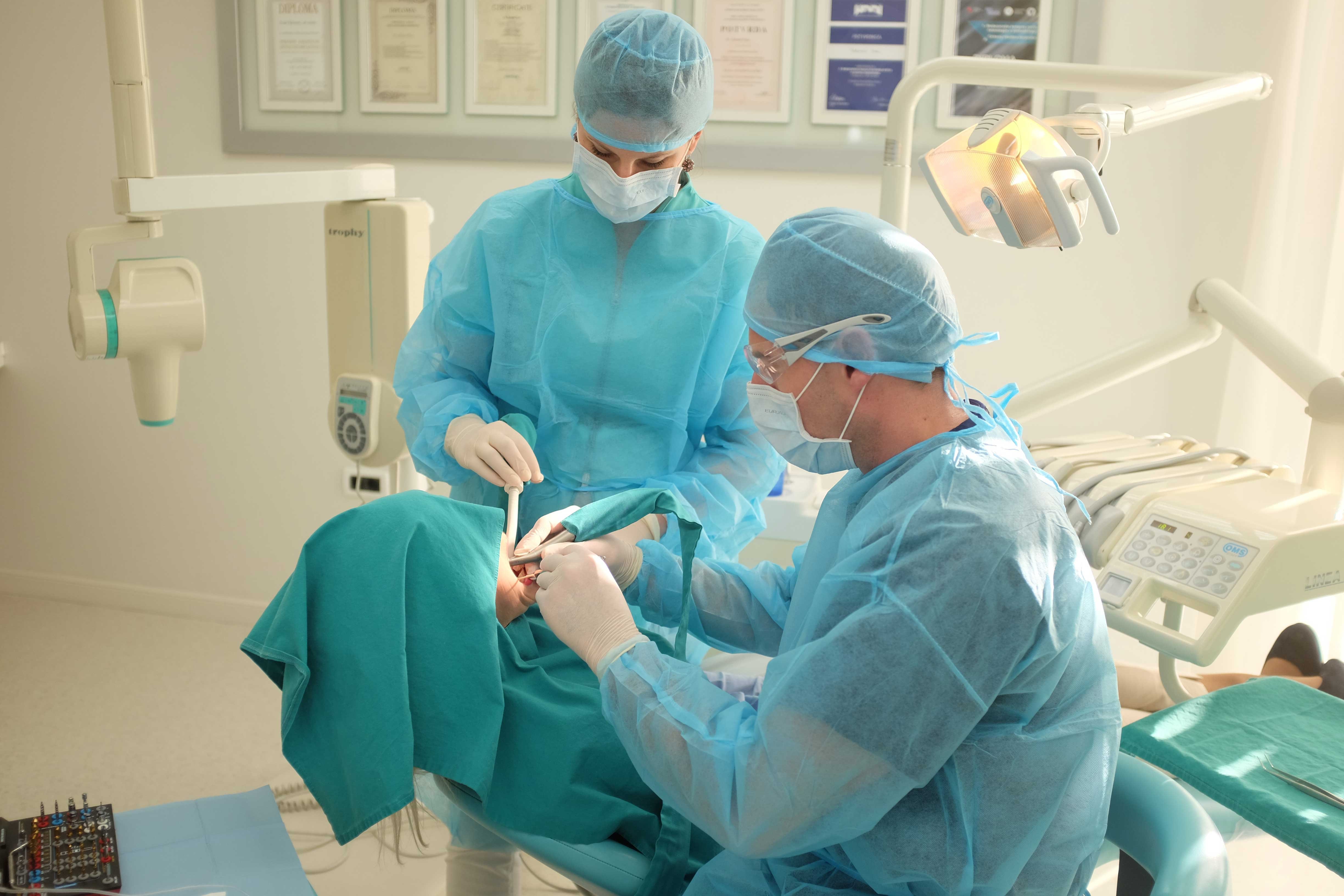 SINUS LIFTING is a procedure of lifting up the bottom of the maxillary sinus in which mucosa of sinus (Schneider’s membrane) is lifted and afterwards implantation takes place. It’s done when the height of the bone in the upper jaw is not sufficient to insert dental implants. With sinus being lifted a necessary height of the sinuses is obtained so implants can be fitted. If there’s a very small amount of bone we wait about 9 months for the artificial bone to get ossified and then the implants are placed.
SINUS LIFTING is a procedure of lifting up the bottom of the maxillary sinus in which mucosa of sinus (Schneider’s membrane) is lifted and afterwards implantation takes place. It’s done when the height of the bone in the upper jaw is not sufficient to insert dental implants. With sinus being lifted a necessary height of the sinuses is obtained so implants can be fitted. If there’s a very small amount of bone we wait about 9 months for the artificial bone to get ossified and then the implants are placed.
3. Placing supra-structure and producing a tooth replacement ( final teeth)
The type of the prosthetic replacement depends on the number of missing teeth, their arrangement, condition of the bone and patient’s health condition.
IF SINGLE TOOTH IS MISSING We can make a crown on the implant.
We can make a crown on the implant.
This is the best option for one missing tooth as neighbouring teeth need not be prepared for making the bridge. In this case an implant is a better and a longer lasting solution.
There are many types of crowns that can be made on an implant depending on the type of the material and a method for fixing the crown onto the implant.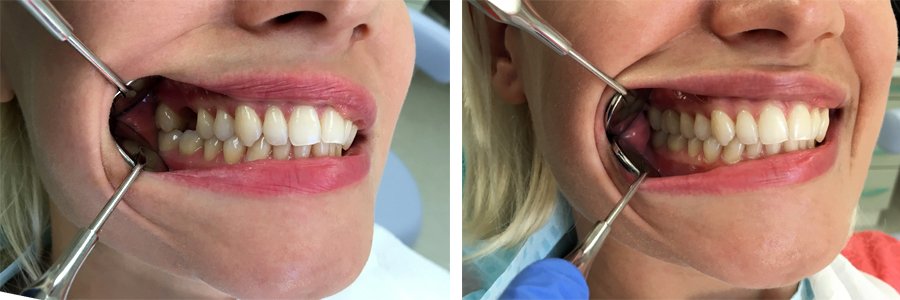 If front teeth are being restored a combination of zirconium supra-structure and all-ceramic crown achieves best aesthetics ( E MAX crowns, zirconium crowns).
If front teeth are being restored a combination of zirconium supra-structure and all-ceramic crown achieves best aesthetics ( E MAX crowns, zirconium crowns).
Aesthetics doesn’t play pivotal role in side teeth so that a ceramic crown on a titanic supra-structure can be made.
In both case a crown can be fixed to the implant either by cementing or with a screw.
IF MULTIPLE TEETH ARE MISSING We make a bridge on the implants. Depending on how many teeth are missing and the condition of the bone an optimal number of implants is defined to make a bridge. The bridge on the implants is the most adequate replacement for teeth in both appearance and function.
We make a bridge on the implants. Depending on how many teeth are missing and the condition of the bone an optimal number of implants is defined to make a bridge. The bridge on the implants is the most adequate replacement for teeth in both appearance and function.
We can make bridges that are cemented on or fixed with a screw to the implants.
IF ALL TEETH ARE MISSING IN THE JAW
We can make:
- Circular bridges on implants
- denture attatched to implants
- all on 4
CIRCULAR BRIDGE ON IMPLANT If there’s enough bone left to place 6 implants at least a metal ceramic, zirconium ceramic or zirconium bridge on implants can be made.
If there’s enough bone left to place 6 implants at least a metal ceramic, zirconium ceramic or zirconium bridge on implants can be made.
DENTURE ATTACHED TO IMPLANTS
When a fixed bridge on implants is not possible a denture attached to implants is the solution. The main feature of this replacement is that unlike a bridge that is firmly fixed on implants a denture can be taken out from the mouth so that better dental hygiene is possible.
The main feature of this replacement is that unlike a bridge that is firmly fixed on implants a denture can be taken out from the mouth so that better dental hygiene is possible.
When in the mouth a denture is retained to the implants, is not movable and it feels like your own teeth. A denture can be attached to the implants with a bar (bar-retained), locator and rhein retainer depending on the situation. In case of complete denture at least two implants should be inserted for a good retention and in order to get good stabilization four implants are recommended.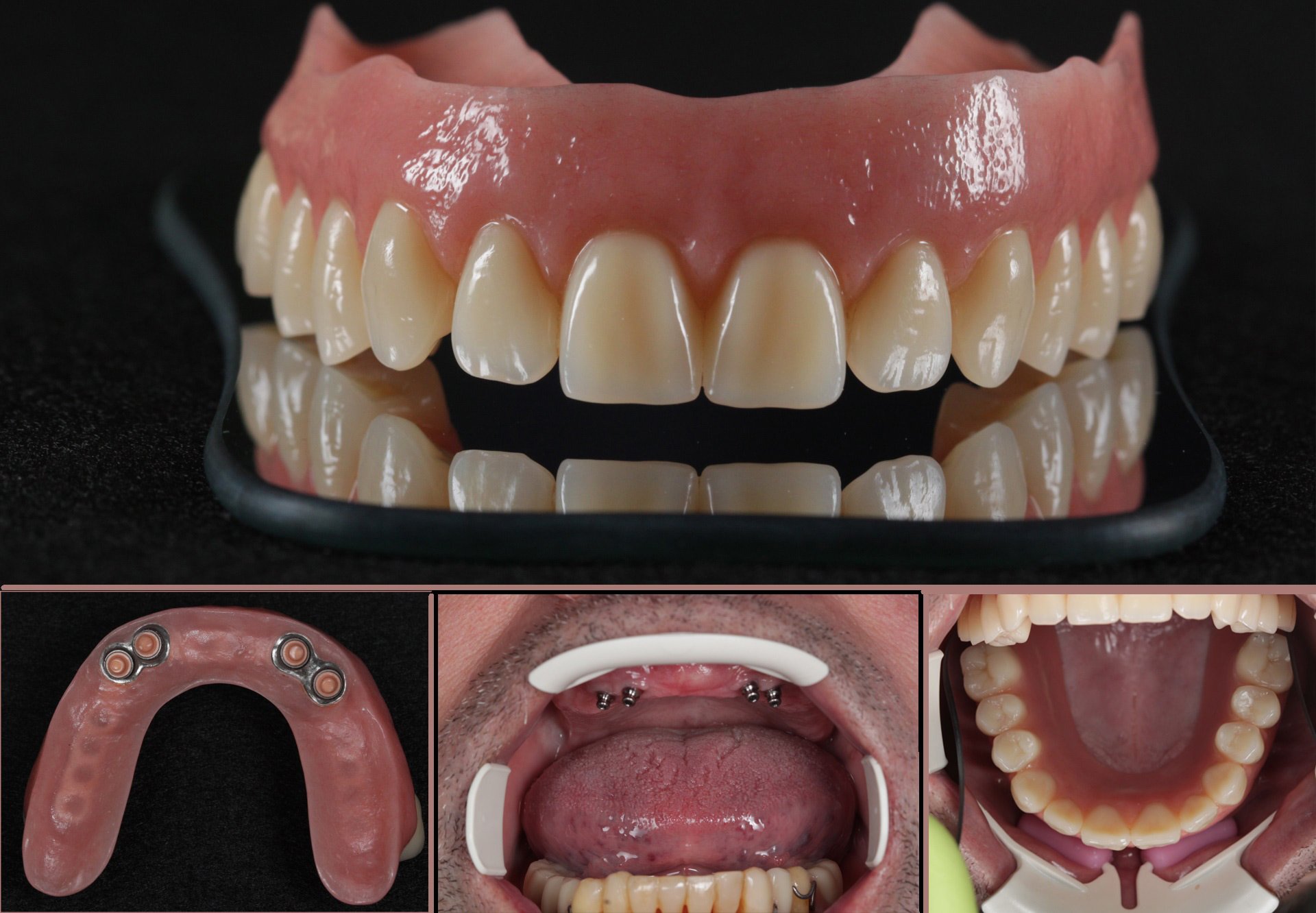 Implant-supported dentures are quite appreciated as they apart from being highly aesthetical provide you with confidence; oral hygiene is also easy to maintain.
Implant-supported dentures are quite appreciated as they apart from being highly aesthetical provide you with confidence; oral hygiene is also easy to maintain.
ALL ON 4
A technique that enables a patient in one day to insert implants and place temporary fixed work on your teeth. After at least three months a final prosthetic work is made that is fixed to the implants with a screw. 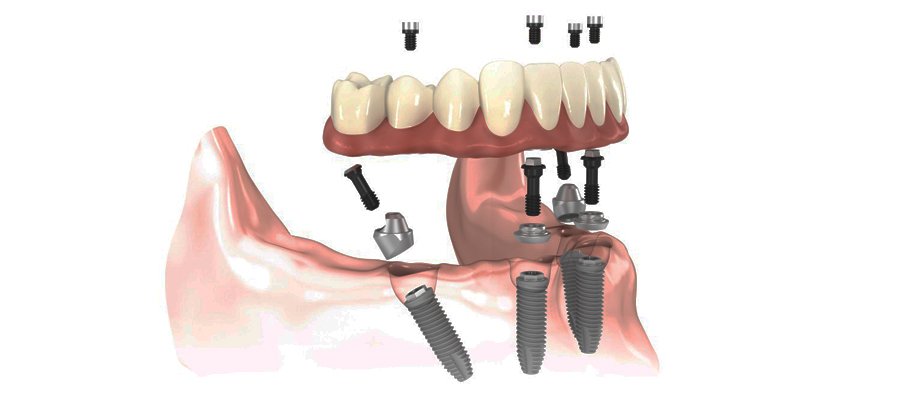 All-on-4® means inserting 4 implants in the front part of the jaw whereby two back implants are placed diagonally following the anatomic structure and two front implants horizontally.
All-on-4® means inserting 4 implants in the front part of the jaw whereby two back implants are placed diagonally following the anatomic structure and two front implants horizontally.
Arranging implants in this way 4 extremely strong bases are formed whose arrangement enables carrying the structure for the rehabilitation of the whole dental range from 10 to 12 fixed teeth.
In our clinic we use several types of implant systems:
Astra tech
MegaGen
Nobel Biocare
Straumann
Dentium
Camlog
It’s worth mentioning that all implants are of high-quality and made of titanium. To suit every patient’s need we carefully consider the best option available.
Who is eligible for implants?
Everybody whose bone growth is complete (app. 18 years of age) and a prerequisite is however that they’re in good health, have sufficient extent of bone and have established a good day-to-day dental hygiene routine.
Diabetes
Diabetes poses a certain contraindication to inserting implants.
Patients suffering from diabetes belong to a risk group for inserting implants since with these patients wound healing tends to be a bit slower and there’s an increased risk of post-operative complications.
Smoking
Smoking poses a certain contraindication to inserting implants.
The success of treatment is proven smaller with smokers as tobacco smoke acts toxically. Smoking reduces the number of blood-vessels, slows down anti-infectious processes and decreases the healing success in general.
It’s highly recommended to stop smoking a few days before the surgery in order to avoid any complications.
Implants are not recommended for persons with osteoporosis, persons undergoing a bisphosphonate therapy, at some chronic heart and kidney diseases etc.
Patient’s dental hygiene habits largely affect the long life of prosthetics work on implants.
Both implant and prosthetic works require careful and accurate dental hygiene because otherwise teeth plaque may build up, tartar, gingivitis and peri-implantitis. If any of these last, implants may get loose or lost in the same way as periodontosis causes teeth loss.
After implants have been inserted patients should make checkups twice a year and have their teeth X-rayed in order to follow oral hygiene, the state of prosthetic replacement, gums and bones around the implant.
Without checkups implant warranty is not valid.
